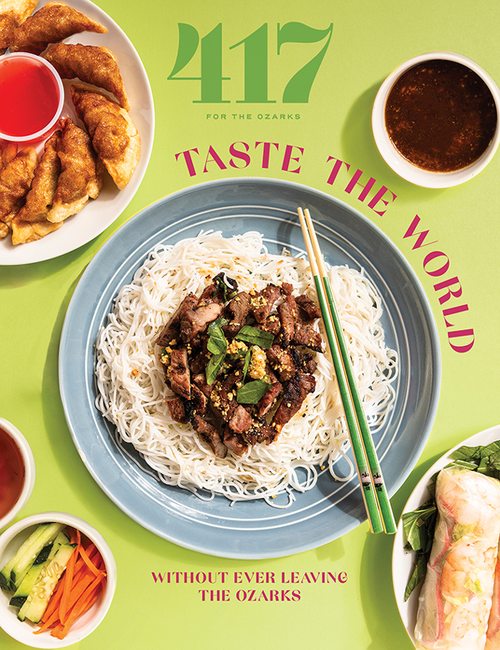Life
We Tried Making Our Own Pasta at Italian Kitchen
Alessandro De Luca and Jennifer Morris host weekly cooking classes at Italian Kitchen
by Jordan Blomquist
Nov 2024

I have many passions in life, and among the top is pasta. I even honeymooned in Italy! My husband will tell you it was because we wanted to see the sights, but really it was for the pasta.
Alessandro De Luca is the head chef and co-owner of Italian Kitchen (540 W. McDaniel St., Springfield), alongside his sous chef and co-owner, Jennifer Morris. After attending culinary school in Italy, De Luca moved to the United States. Italian Kitchen originally started as a catering service. After spending time away in Italy, De Luca gained a fresh perspective on its direction. Now, he hosts weekly classes where participants learn to make pasta, focaccia and other traditional dishes. This is what De Luca is most passionate about—teaching others how to make authentic Italian food using often ancient recipes. “I love the feeling of happiness and accomplishment that I see in my students when they get to go home with food they made from scratch,” he says.
I visited Italian Kitchen to make pasta from scratch at the Pasta Making 101 class. As we walked in, we saw two long tables set for dinner. Once everyone arrived, De Luca and Morris took us to the back kitchen where long metal worktables were set with bowls of flour and eggs. Each bowl had 200 grams of flour—that’s one point De Luca makes, he always measures in grams. Every 100 grams of flour gets one egg. From there, if the dough is too dry, you’ll need to add moisture, but the type of moisture depends on the texture. If it’s slightly dry, add a little water, but if it’s very dry, add another egg. It’s always easier to adjust dough that is too wet than to fix dough that is too dry—excessively dry dough can become difficult to salvage.
Once the pasta dough was perfect, we let it rest for 30 minutes. In the meantime, De Luca made us dinner: salad, bruschetta and tagliatelle pasta with pesto, ricotta cheese and lemon zest and for dessert, maritozzo con la panna—a sweet roll filled with fluffy whipped cream.
We returned to the kitchen to flatten and cut our dough. This step was fun—we divided our dough into four sections, flattened each to fit the hand-crank pasta maker and fed the sheets through to get an even thickness. We adjusted the settings on the pasta maker each time to make the dough progressively thinner. Once the dough reached the desired thinness, we passed the sheets through the cut setting to slice them into flour-covered tagliatelle strips. Another tip I learned is, at this step, moisture is the enemy of good pasta dough. De Luca recommends sprinkling the cut pasta generously with rice flour to help preserve the dough—it helps keeps the noodles from sticking together.
Voila! We all went home with our homemade pasta and instructions to use any sauce. To cook the noodles, boil them for just a minute and a half. If frozen, boil for three minutes.
















